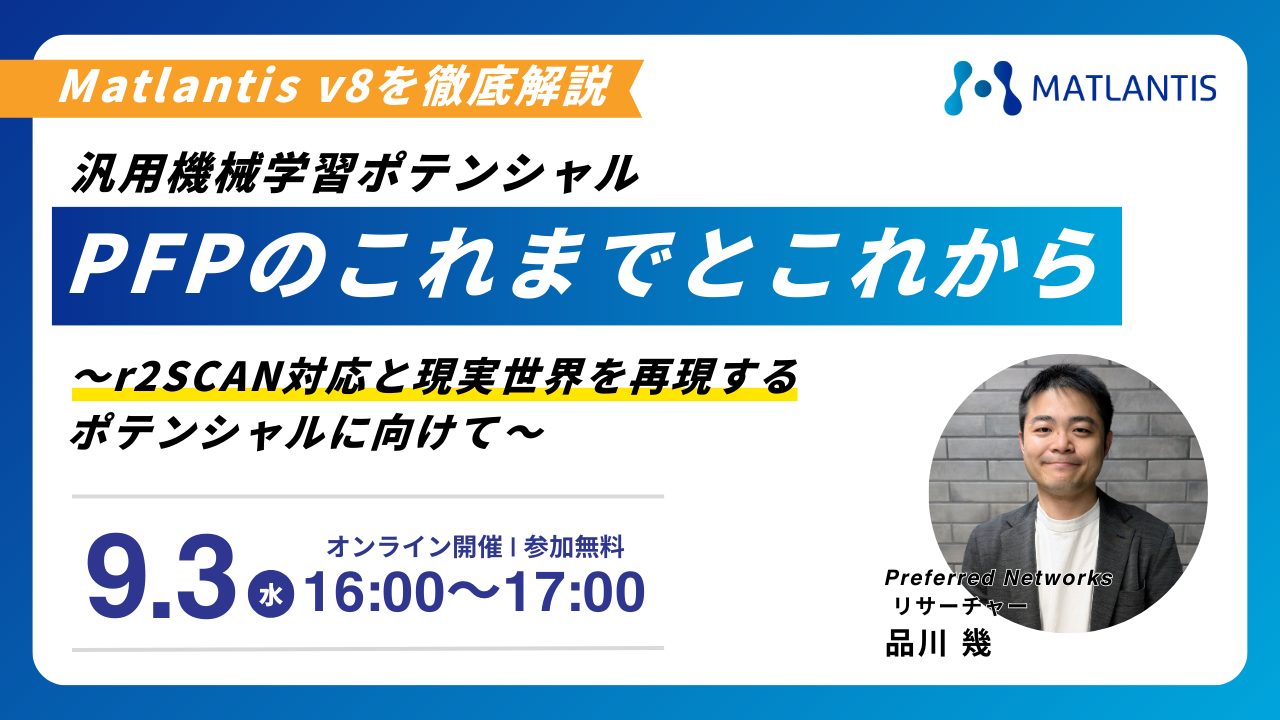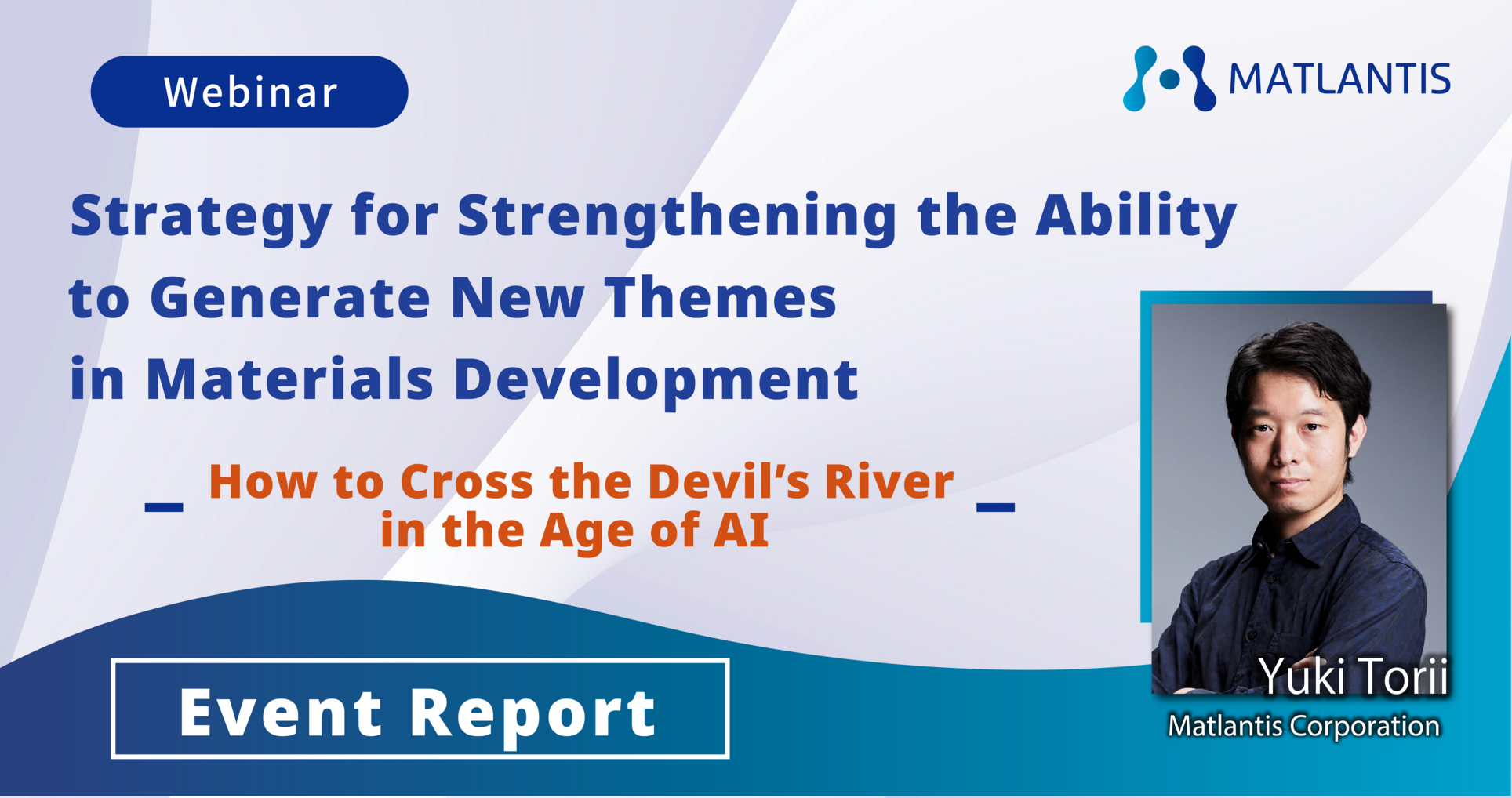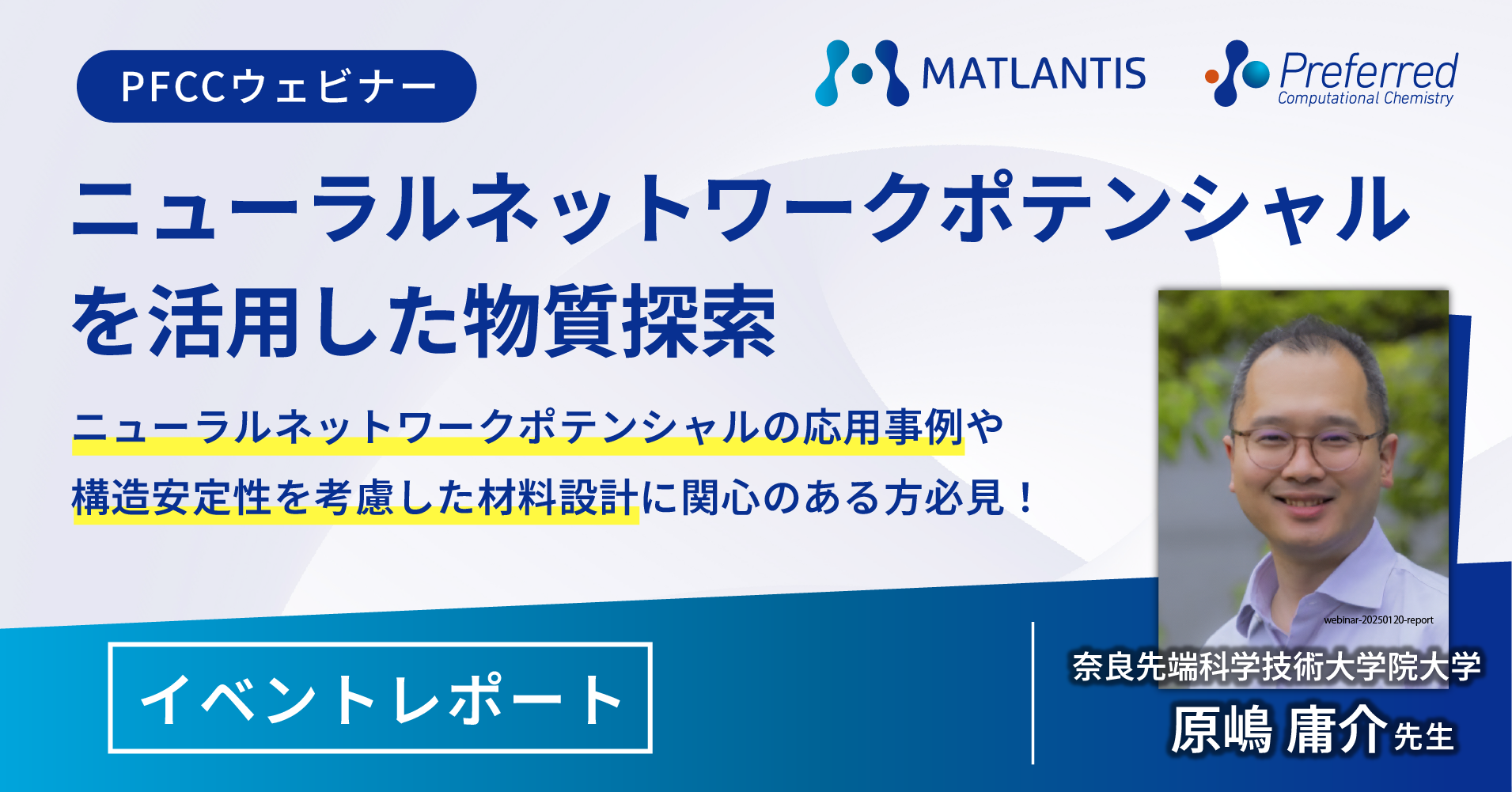Video Streaming
User Community
Online2022.12.2 (JPN)
Lecture videos and materials from the 1st Matlantis User Conference now available
PFCC held the 1st Matlantis User Conference online on December 2, 2022. In addition to PFCC/PFN presentations on Matlantis™'s core technology and future roadmap, academic and corporate users presented their respective use cases. A total of 131 people participated on the day.
Below, we will release summaries of each presentation at the Matlantis User Conference, as well as recordings and projection materials.
The technology and ideas behind Matlantis
Satoshi Takamoto, Researcher, Preferred Networks, Inc.
Presentation materials
overview
Matlantis' core technology, PFP (Preferred Potential), is the culmination of a series of research aimed at fusing physical simulation and deep learning. PFP began with research into interpreting the governing equations of atomic simulation as neural networks. After becoming convinced of the effectiveness of deep learning's high expressive power through the results of this research, while enrolled at Massachusetts Institute of Technology, he designed a neural network potential called TeaNet (Tensor Atom Embedding Network). TeaNet attempts to fuse graph neural networks with physical models by expressing the positional relationships of atoms as tensors. Using this TeaNet, we have succeeded in demonstrating an interatomic potential that can uniformly express a wide range of phenomena.
Based on the deep learning technology that was further developed at the same time, I came to the idea that it would be possible to greatly increase the resolution of the world by using deep learning. I then started working on creating an interatomic potential that can represent any atomic structure, which could be said to be a long-cherished wish of over 100 years in the field of computational chemistry. The result was PFP.
PFP is designed with versatility in mind so that it can be applied to a variety of materials. To that end, the machine learning model itself uses a search method so that the learning dataset is not limited to a specific material. The large-scale and diverse dataset, and the large-scale computing resources required to create it, are the source of PFP's performance.
Matlantis, a materials exploration simulator with PFP as its core technology, is enabling materials exploration through simulation. In the future, we will develop Matlantis into a tool that provides a bird's-eye view of the world of materials, and realize "automated driving" of materials exploration.
Academia User Case: Battery Material Research Using Matlantis
Mr. Masanobu Nakayama, Nagoya Institute of Technology
Presentation materials
overview
Matlantis is a fast, highly accurate material simulation that does not require the user to prepare potentials. In this presentation, we will introduce comparative examples with high-precision first-principles calculation results using storage battery materials, as well as simulation results for surfaces and interfaces that were difficult to evaluate using existing first-principles calculations.
Matlantis: The past and future
Daisuke Okanohara, President and CEO of Preferred Computational Chemistry, Inc.
Presentation materials
overview
When developing Matlantis, the first thing we discussed was what kind of user interface to use. Looking at the research activities of Matlantis users, we found that there is no typical flow for materials development research activities, so rather than creating a UI with a fixed flow, we first provided a Jupyter Notebook programming environment that runs on a browser. This led us to the conclusion that it would be easy for users to customize their workflow.
The "learning data" that supports Matlantis was created using Preferred Networks (PFN), one of the largest supercomputers in Japan, with the computational resources equivalent to about 1,000 years of a single GPU. We will continue to collect learning data in the future, with a plan to expand the supported phenomena based on customer feedback (active learning at the community level).
The most recent Matlantis update is the application of PFVM technology, which utilizes PFN's cutting-edge compiler and optimization technology to improve memory usage during inference, thereby increasing the number of atoms that can be inferred. This makes it possible to handle materials with a large number of atoms, such as carbon nanotubes (which can range from several thousand to over 10,000 atoms, depending on the conditions).
When we think of simulation in the framework of "simulation," not limited to Matlantis, simulation is merely a cut-out of a "part" of the real world, and that cut-out contains elements of know-how and art. Matlantis aims to reduce unnecessary "art" and be able to handle a wider range of problems by improving simulation technology and calculation performance in the future. Of course, the scale of the real world is overwhelmingly large, so no matter how much simulation evolves, we believe that it will be necessary to combine it with human ingenuity.
Specific new functions for Matlantis that we envision in the future include further increasing the number of atoms that can be inferred, estimating electronic states, and strengthening computational resources. With regard to "strengthening computational resources," we have confirmed that the deep learning processor (MN-Core) developed by PFN can speed up atomic-level simulations by nearly five times compared to existing GPUs, and we are considering using it in the future. In the future, we would like to provide such computational power as value to our customers.
PFCC and Matlantis will continue to evolve to achieve our mission of "Contributing to the creation of innovative materials to realize a sustainable world." We hope to open up a new future for materials science together with our customers and everyone else.
公開日:2023.01.16



